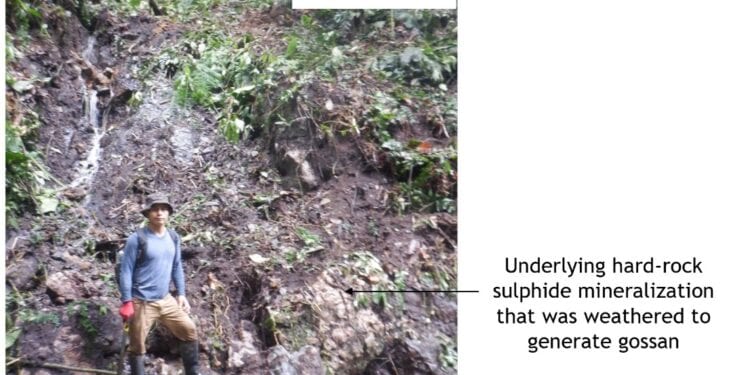Extends Tiria-Shimpia To 22 Km
Aurania Resources Ltd. (TSXV: ARU) (OTCQB: AUIAF) has confirmed a discovery at Shimpia North, an area in which elevated metal values have been found in streams draining a ridge that is seven km long.
Shimpia North is an extension to the high-grade silver-zinc-lead mineralisation at Tiria-Shimpia in the Company’s Lost Cities – Cutucu Projec in southeastern Ecuador. The discovery at Shimpia North extends the Tiria-Shimpia target from 15 km to a total length of 22 km.
Chairman and CEO, Dr Keith Barron, said outcropping mineralisation in the first reconnaissance exploration in this new area gave a grade of 40 grams per tonne (g/t) silver in an extensively weathered gossan (iron-rich residue that remains after intense weathering of sulphide-rich rock) and, among other samples, a boulder of barite in a stream returned 19g/t silver, 6.5% lead and 1.1% zinc.
“Shimpia North appears to have the same character, style and mineralisation type as Tiria-Shimpia, though it is displaced to the northwest,” Dr Barron said.
“I consider it to be part of the same system. This may be the distal expression of the copper/silver -in-sediment system we have traced further to the south across country for 23 kilometres.
“In any case, the Cutucu is proving to be a rare case of a metal-rich basin, that though uplifted and exposed has appeared to not be eroded to significant extent. The siliceous sinters we find at Kuri-Yawi are evidence of the original land surface in the Jurassic, when we expect the mineralizing event took place.
“What I find astounding is that Cretaceous and younger cover rocks have been stripped off to just the right erosional level to expose mineralization. Otherwise, we would never have guessed it was there.
“Equally significant, our very large land parcel has allowed us to piece this story together. If we had had a postage stamp type parcel, we never would have guessed the magnitude of these mineralizing systems. Serendipity has worked in our favour.”
Dr Barron said rock-chip and stream sediment sampling that highlights the extent of the mineralised zone, corresponds closely with high potassium detected in radiometric data from the company’s geophysical survey completed in 2017.
The potassium enrichment feature extends approximately 10 km beyond the area investigated so far, providing an invaluable exploration guide to finding possible further extensions of the mineralised system.
Dr Barron said that though it is not yet confirmed, it is believed the potassium mineral is langbeinite, a potassium magnesium sulphate which could potentially occur with the other sulphates like barite, celestite, or gypsum.
The company has commenced selection of drill sites at the Tiria-Shimpia target area and expects to begin drilling in this quarter.
The mineralisation at site is sediment-hosted, found parallel to the sedimentary layering in limestone intercalated with sandstone. Hard rock samples contain galena (lead sulphide) and sphalerite (zinc sulphide) with barite (barium sulphate) and celestite (strontium sulphate). Gossan, weathered rock in which the sulphide minerals have been removed by oxidation to leave an iron oxide residue, has also been encountered.
Although zinc and lead would have been leached out of the gossans, these residues allow us to map out the original extent of the sulphide-rich layers at surface, which could guide us to fresh, sulphide-rich rock below the weathered zone.












